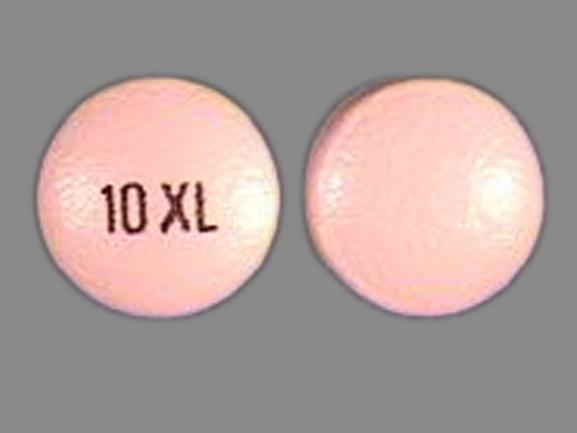Ditropan XL and Alcohol/Food Interactions
There is 1 alcohol/food/lifestyle interaction with Ditropan XL (oxybutynin).
Oxybutynin Alcohol (Ethanol)
Moderate Drug Interaction
GENERALLY AVOID: Use of anticholinergic agents with alcohol may result in sufficient impairment of attention so as to render driving and operating machinery more hazardous. In addition, the potential for abuse may be increased with the combination. The mechanism of interaction is not established but may involve additive depressant effects on the central nervous system. No effect of oral propantheline or atropine on blood alcohol levels was observed in healthy volunteers when administered before ingestion of a standard ethanol load. However, one study found impairment of attention in subjects given atropine 0.5 mg or glycopyrrolate 1 mg in combination with alcohol.
MANAGEMENT: Alcohol should generally be avoided during therapy with anticholinergic agents. Patients should be counseled to avoid activities requiring mental alertness until they know how these agents affect them.
References (1)
- Linnoila M (1973) "Drug effects on psychomotor skills related to driving: interaction of atropine, glycopyrrhonium and alcohol." Eur J Clin Pharmacol, 6, p. 107-12
Switch to consumer interaction data
Ditropan XL drug interactions
There are 289 drug interactions with Ditropan XL (oxybutynin).
Ditropan XL disease interactions
There are 6 disease interactions with Ditropan XL (oxybutynin) which include:
- autonomic neuropathy
- infectious diarrhea
- angle-closure glaucoma
- GI/urinary obstruction/atony
- myasthenia gravis
- central nervous system
More about Ditropan XL (oxybutynin)
- Ditropan XL consumer information
- Check interactions
- Compare alternatives
- Reviews (6)
- Drug images
- Side effects
- Dosage information
- During pregnancy
- Drug class: urinary antispasmodics
Related treatment guides
Drug Interaction Classification
| Highly clinically significant. Avoid combinations; the risk of the interaction outweighs the benefit. | |
| Moderately clinically significant. Usually avoid combinations; use it only under special circumstances. | |
| Minimally clinically significant. Minimize risk; assess risk and consider an alternative drug, take steps to circumvent the interaction risk and/or institute a monitoring plan. | |
| No interaction information available. |
See also:
Further information
Always consult your healthcare provider to ensure the information displayed on this page applies to your personal circumstances.


